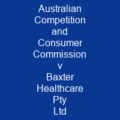Consumer Behaviour: The Art of Understanding Purchase Decisions
Consumer behaviour is the study of individuals, groups, or organisations in their activities associated with the purchase, use, and disposal of goods and services. It’s a fascinating field that delves into why people make certain purchasing decisions. Imagine you’re walking down the aisle of a supermarket; what makes you pick up one brand over another? How do emotions, attitudes, and preferences play a role in your choice?
The Emergence of Consumer Behaviour
Consumer behaviour emerged as an interdisciplinary social science in the 1940s-1950s, blending elements from psychology, sociology, anthropology, marketing, and economics. This blend is like mixing different paints to create a masterpiece; each discipline adds its unique hue to the overall picture of consumer decision-making.
Understanding Consumer Qualities
The study investigates individual qualities such as demographics, personality lifestyles, and behavioural variables to understand people’s wants and consumption patterns. It’s akin to understanding the ingredients in a recipe before you start cooking; each element contributes to the final outcome. For instance, knowing that someone is a frequent traveler might influence their choice of travel insurance or airline loyalty programs.
External Influences on Consumers
It also examines influences from social groups and society, including family, friends, sports, and reference groups. Think about how your friends’ opinions can sway you to try a new restaurant or buy a particular gadget. These external factors are like the wind that guides a ship; they steer consumer decisions in different directions.
Tools for Analysis
Marketers and researchers use ethnography, consumer neuroscience, machine learning, customer relationship management databases, and other tools to analyze customer patterns and factors influencing loyalty, re-purchase intentions, referrals, and brand advocacy. These tools are like a map that helps navigate the complex terrain of consumer behaviour.
The Purchase Decision Process
Understanding purchase and consumption behaviour is a key challenge for marketers. The process involves several stages: problem recognition, information search, evaluation, and finally, the purchase decision itself. Each stage is crucial in shaping the final outcome.
Problem Recognition
The first stage of the purchase decision process is where the consumer identifies a need and decides they are ‘in the market’ for a product or service to satisfy it. This can be as simple as realizing you’re out of toilet paper, or as complex as deciding on a new car.
Information Search
The next stage involves gathering information about viable purchase alternatives. Consumers use both internal and external search methods to gather data. The internet has made this process faster and more accessible than ever before. Imagine you’re looking for the best laptop; you might start with a Google search, read reviews on tech websites, or ask friends for recommendations.
Consumer Evaluation
The evaluation stage is where alternatives are assessed based on functional (tangible) and psycho-social (abstract) benefits. Brand image plays a significant role here, as consumers often prefer brands that match their personality. For example, someone who values luxury might choose a high-end brand over a more affordable one.
Purchase Decision
The final stage is the purchase decision itself. This can be influenced by factors such as credit provisions, sales promotions, and limited-time incentives. The key to a powerful call-to-action is providing consumers with compelling reasons to act now rather than later. For instance, ‘Limited stocks available’ or ‘Order before midnight for a free gift’ are tactics used to encourage immediate purchase.
Post-Purchase Evaluation
Following the actual purchase and after experiencing the product or service, the consumer enters the final stage: post-purchase evaluation. This is where consumers examine their decision and may experience post-decision dissonance if they feel uncertain about whether they made the right choice.
Strategies to Reduce Dissonance
To reduce this uncertainty, consumers might seek validation from peers or significant others through social media likes, reviews, and testimonials. Marketing communications can also be used to remind them that their purchase was a wise one. For example, a brand might highlight positive customer experiences in their advertisements.
Consumer Decision Styles
Consumer decision styles include quality conscious/Perfectionist, brand-conscious, recreation-conscious/Hedonistic, and others. These styles are defined by factors such as price-sensitivity, quality-consciousness, brand-consciousness, novelty-seeking, fashion-consciousness, and habit.
Impulse Buying
Impulse buying is another interesting phenomenon. About 28% of FMCG purchases are unplanned or impulse buys. Supermarkets strategically place high-value items at the front to maximize these opportunities. Understanding these styles helps marketers tailor their strategies to different consumer types.
New Product Adoption and Diffusion
When it comes to new product adoption, innovations are diffused through groups with a S-shaped curve indicating the adoption process. Research suggests regularity in this process, with few initial adopters followed by successive waves of adopters over time. Marketers use various strategies like advertising, shopping around, and sampling to reduce perceived risk.
Brand Switching
Brand switching occurs when consumers choose a different brand from their regular or customary one. Marketing activity targets these brand-switchers who account for 41% of shoppers in global surveys. Factors driving this include better prices, quality, service agreements, and improved features.
Online Consumer Behavior
The rise of online shopping has transformed consumer behavior. Online platforms allow consumers to engage in various stages of the purchase decision process, from acquiring information to post-purchase behaviors. Marketers have segmented consumers into different types based on their online behavioral characteristics, such as directed buyers and bargain hunters.
Affective State and Consumer Satisfaction
The affective state can significantly influence consumer behavior. People in a positive mood are more efficient at information search activities, quicker to make decisions, and easier to please. Those in a negative mood are slower, argumentative, and more likely to complain. This relationship between emotions and satisfaction is an area of significant academic attention.
Customer Loyalty
Customer loyalty involves the relationship between an individual’s relative attitude and repeat patronage. Four types of loyalty proposed include no loyalty, spurious loyalty, genuine loyalty, and switching loyalty. Loyalty marketing programs aim to retain customers through reward schemes that motivate them with material possessions or esteem.
Visual Cues in Product Design
Aesthetics play a crucial role in consumer behavior. Consumers decide whether they like a product within 90 seconds of viewing it for the first time. Visual cues such as colour, composition, typography, and imagery are associated with the phenomenon of fluency. For instance, blue and black are viewed as more reliable, valuable, and expensive, while yellow, orange, and brown are associated with cheapness and low quality.
Consumer Neuroscience
Consumer neuroscience employs bio-metric sensors like EEG, fMRI, and eye tracking to study consumer responses to stimuli. These tools reveal what triggers the brain’s pleasure centre and help marketers understand why consumers behave in certain ways. For example, framing price or value can assist in creating a sense of value.
Conclusion
In conclusion, understanding consumer behaviour is essential for businesses looking to connect with their target audience effectively. By delving into the intricate processes that drive purchase decisions, marketers can tailor their strategies to meet consumers’ needs and preferences more accurately. As technology continues to evolve, so too will our methods of understanding and influencing consumer choices.

You want to know more about Consumer behaviour?
This page is based on the article Consumer behaviour published in Wikipedia (retrieved on November 29, 2024) and was automatically summarized using artificial intelligence.






